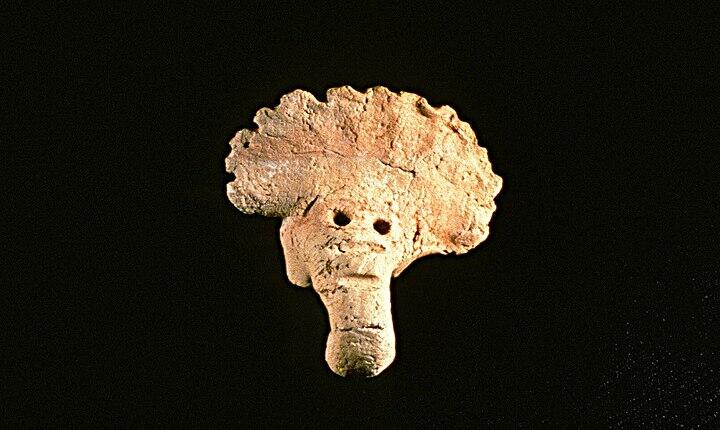Above: Elephant head from Harappa.
The first section focuses on theoretical issues, the definition of terms and various interpretive biases regarding "ritual" artifacts in the prehistoric period, while the second half examines the important "ritual" artifacts of the Upper Palaeolithic hunter~gatherer populations in South Asia and discuss future directions for research.
South Asia is renowned for being the birthplace of some of the world's earliest major religions and yet we know very little about the belief systems of the indigenous communities who inhabited the subcontinent during the Prehistoric and palaeolithic periods. Buddhism, Jainism and the heterogeneous collection of belief systems included under the term Hinduism became prominent approximately 2500 to 2000 years ago, or somewhat earlier in the case of Vedic religion. These religions are well documented from a variety of sources, including religious texts, epic literature, carved edicts, ritual artifacts and ritual structures.

